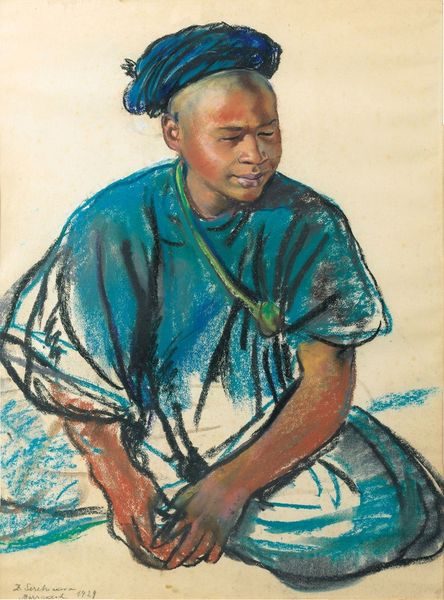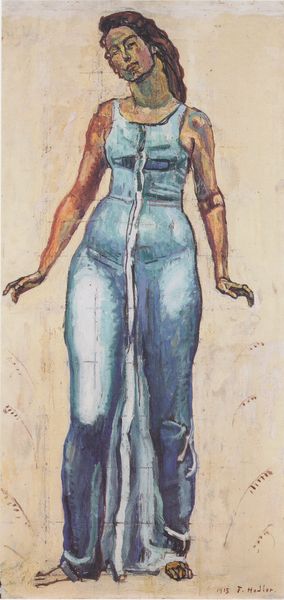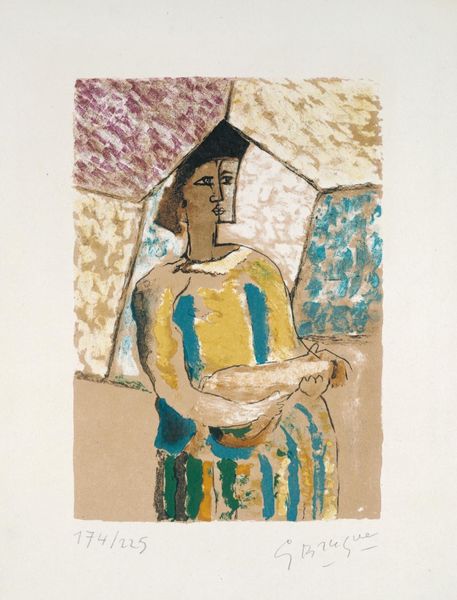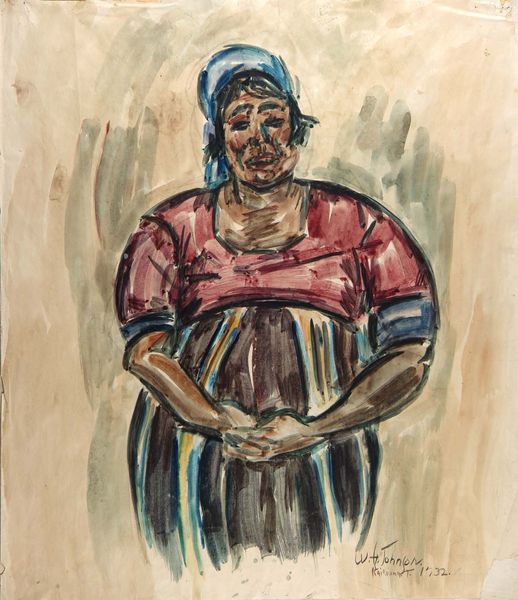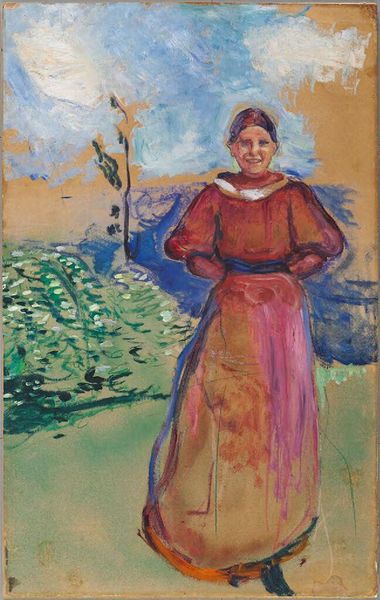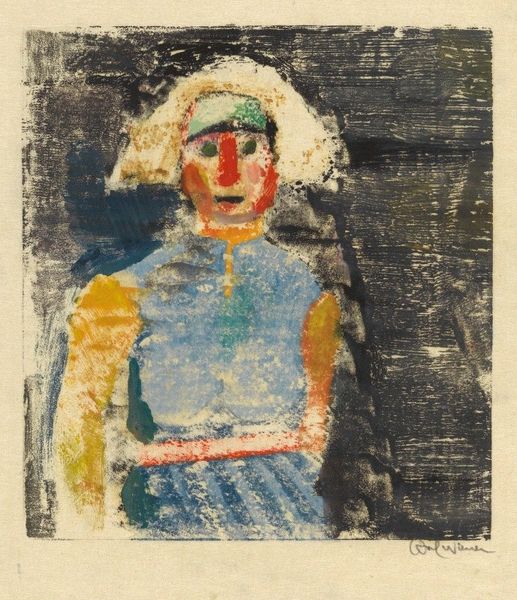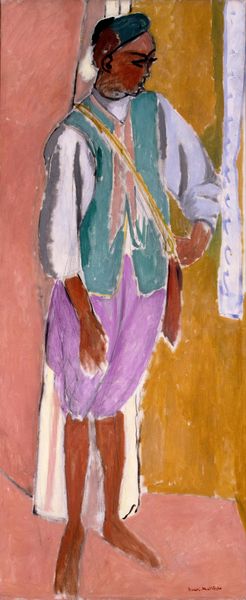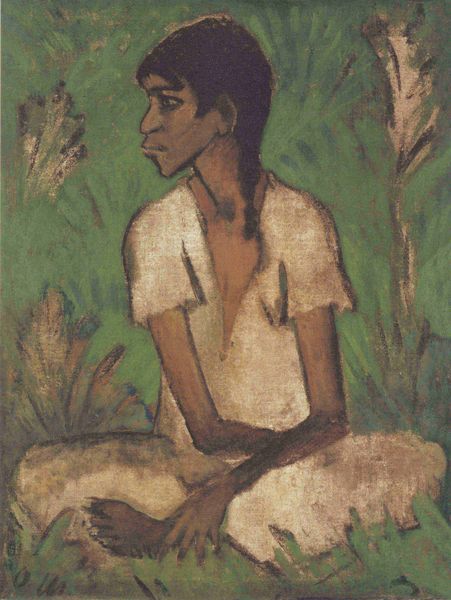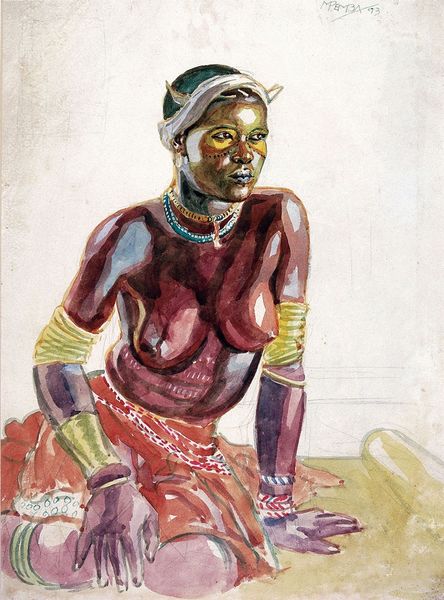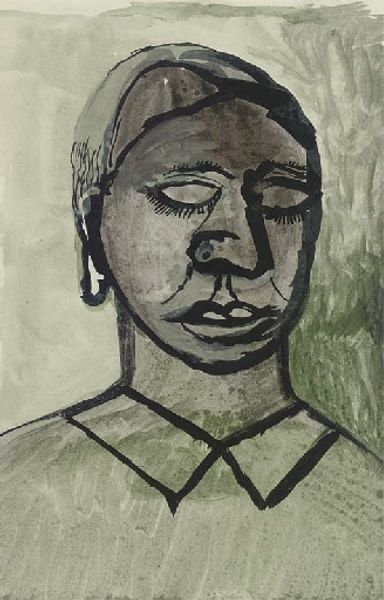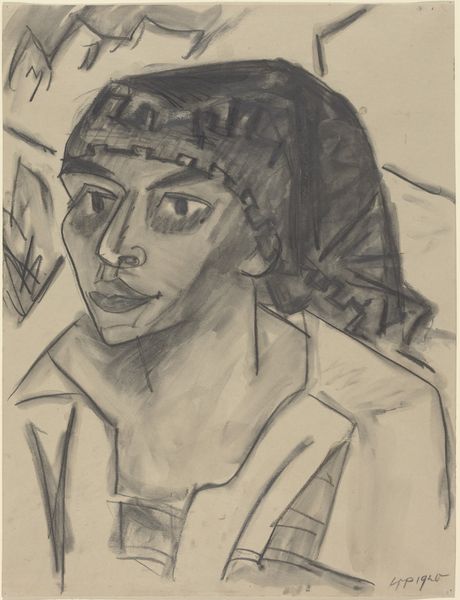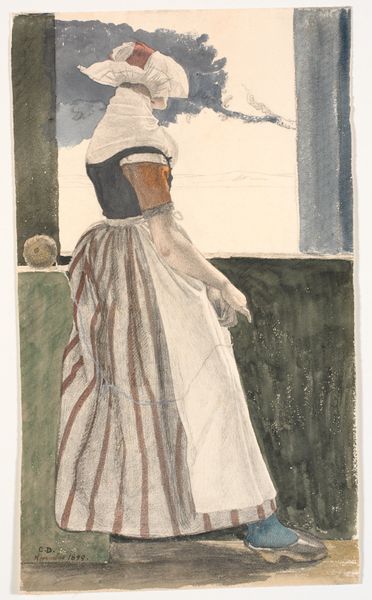
Copyright: William H. Johnson,Fair Use
Editor: Here we have William H. Johnson’s "African Woman - Study in Tunis," from 1932, made with watercolor. It has such an unassuming presence. What do you see in this piece from a formalist perspective? Curator: Note how the composition’s central figure asserts its presence through an intricate arrangement of horizontal and vertical lines and the strategic deployment of contrasting warm and cool hues. The structural integrity hinges on this calculated chromatic interplay, thereby orchestrating visual equilibrium. Editor: The colours really stand out! How would you describe the effect they have on the structure of the artwork? Curator: By meticulously observing the tonality and saturation variances, we see Johnson generates depth while concurrently flattening certain areas. This controlled contrast results in a tension that vitalizes the otherwise quiescent landscape and the figure. Is that something you noted as well? Editor: Absolutely! I was drawn to the interplay of the vibrant colors of the skirt and the paler hues of the background, this gives an ambiguous feeling that is really intriguing. Curator: Indeed, such tension elevates this study beyond a mere representational likeness. Instead, Johnson crafts a semiotic system using the pure formal vocabulary of painting. What new observations do you now have, considering our analysis? Editor: The way you analyze color and composition as almost like characters in themselves really reframed how I see the painting; I now perceive it less as a literal depiction of a woman and more as a narrative told through form. Curator: Precisely! The canvas is not merely a surface, but an arena where formal elements converse, contradict, and ultimately coalesce.
Comments
No comments
Be the first to comment and join the conversation on the ultimate creative platform.
